| Location |
| Along the Banks of Putah Creek (on Campus) |
| Mailing Address |
| One Shields Ave |
| Davis, CA 95616 |
| Headquarters |
| Valley Oak Cottage (TB-32) |
| LaRue Road, UC Davis |
| Phone |
| (530) 752-4880 |
| Website |
| http://arboretum.ucdavis.edu/ |
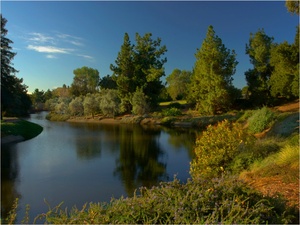 The Mediterranean Section of the Arboretum. Photo by Allan Jones
The Mediterranean Section of the Arboretum. Photo by Allan Jones
According the official UC Davis Arboretum site, the UC Davis Arboretum (Known as "The Arb" to some locals) is:
- a living museum
- an outdoor classroom
- a public garden with over 2,400 kinds of trees and plants
- a beautiful place for active recreation or peaceful contemplation
Might I also add:
- a romantic place to take a date on an evening walk
- a great place to unwind and relax
- an area to get some fresh air and exercise
- one of the best picnic spots in all of Davis
- home of the Arboretum Folk Music Jam Session
- it was used to host outdoor raves during covid-19 pandemic
The UC Davis Arboretum occupies 100 acres of land along the south edge of campus, along the banks of Arboretum Waterway, on the old north channel of Putah Creek. It was established in 1936 to help young biologists at UC Davis learn the plants of California. The paths of the Arboretum make a walking and running loop that is about 3.5 miles long.
For those with an interest in gardening, the plants of California, or local wildlife, the garden has over 31,000 trees and plants. Many of the plants have plant labels or nearby signs, describing the collection. The Arboretum is free and open seven days a week, 365 days a year.
Frequently, guided tours and workshops are offered for the public or special groups. For teachers, there are programs especially designed for student groups. Visits to the UC Davis Arboretum are popular field trips for local K-12 schools and community colleges. UC Davis students and faculty also host science cafes, music, theatre performances, readings, or art events in the Arboretum that are open to the public, for free or for very low cost.
Highlights include the Carolee Shields White Flower Garden—designed in the style of the moon viewing gardens in Japan and India that feature white flowers to reflect the light of the full moon, a new Native American Contemplative Garden, which honors the native Patwin people who lived on here, along Putah Creek, and the shady T. Elliot Weier Redwood Grove, a grove of coast redwoods that were planted by UC Davis student volunteers in the 1930s.
Although people from the local area and from the entire region enjoy visiting the UC Davis Arboretum for runs, walks, and learning more about gardening, it is also a scientific museum, with nationally important research collections of oaks and acacias. You will often see UC Davis classes or faculty researchers out in the gardens— more than 100 classes on campus use the Arboretum, and it is an busy site for student and faculty research projects about plants, water, and wildlife.
Without gate fees, the UC Davis Arboretum depends on community support. The Friends of the Davis Arboretum is made up of supporters of the Arboretum. Since the 1970s, the Friends— who came together to protect the Arboretum, after all funding to the garden was cut and all staff were laid off during a UC Davis budget crisis— have been hosting fundraising plant sales in the spring and fall, and organizing volunteers who work together with the staff all year in weekly teams or as part of large, one-time community work days to keep the Arboretum gardens, nursery, events, and office tasks running smoothly.
The UC Davis Arboretum assumed a leading role in the life of the campus when the campus master plan of the 1990's adopted the theme of "Campus as Arboretum" through the efforts of Professor and Arboretum Drirector Kerry J Dawson. Aside from bringing the concept of educational plant collections surrounding campus facilities, Director Dawson secured National Endowment for the Arts funding for a gateway design competition focused on lands surrounding the arboretum and specifically, the newer south campus developments around the visitor's center. Read more about the history of the Arboretum here: In our own Backyard: A History of the UC Davis Arboretum
Visitor Map
The Waterway
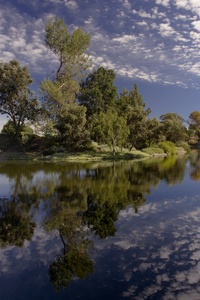 Photo by Allan Jones
Photo by Allan Jones  A sign on the edge of Lake Spafford
A sign on the edge of Lake Spafford
For the most part, the entire Arboretum waterway is 4 feet deep from one end to the other. All storm water runoff from the main campus enters the waterway and incidental runoff from landscape irrigation is the only other source of inflow. The waterway holds about 11 million gallons of water and is about 10 acres in area. It was constructed in 1969 along the historic channel of the North Fork of Putah Creek.
Some areas, like Lake Spafford (location: 38.3215N by 121.4449W) were widened to create some variation in the waterway. F. Edwin Spafford served as ASUCD President in 1953 and he made many lasting contributions to the University of California and to the Davis campus from 1954 until his retirement in 1987. His wife, Lois Spafford gave $20,000 to establish the Ed and Lois Spafford Endowed Arboretum Maintenance Fund and the lake was named in Ed Spaffords' honor.
There is a working boathouse at the body of water west of Putah Creek Lodge.
The Plant Collections
 Macro shot of a Salvia spathacea, hummingbird sage, in the Arboretum
Macro shot of a Salvia spathacea, hummingbird sage, in the Arboretum 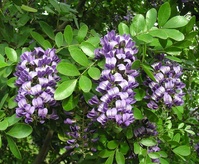 Fragrant flowers. Sophora secundiflora (Texas mountain laurel)
Fragrant flowers. Sophora secundiflora (Texas mountain laurel)  Lycoris radiata in the East Asian section near Mrak Hall
Lycoris radiata in the East Asian section near Mrak Hall
The collections include over 31,000 plants adapted to a Mediterranean climate, with hot, dry summers and cool, wet winters. The 2,421 taxa in the collection represent 156 plant families that are arranged in a series of gardens from different geographic areas, plant groups, or horticultural themes. The plants in the Arboretum are maintained by Arboretum staff members in combination with over 200 active volunteers.
The plant collections include:
- Arboretum Terrace and Lois Crowe Patio
- Australian Collection
- California Foothill Collection
- Carolee Shields White Flower Garden and Gazebo
- Conifer Collection
- Desert Collection
- East Asian Collection
- Eric E. Conn Acacia Collection
- Mary Wattis Brown Garden of California Native Plants
- Mediterranean Collection
- Native American Contemplative Garden
- North Coast Collection (see Coast Redwoods)
- Peter J. Shields Oak Grove
- Ruth Risdon Storer Garden (also known as Valley-Wise Garden)
- South American Collection
- Southwest US/ Mexican Collection
- T. Elliot Weier Redwood Grove
- Valley Oak Grove
- Warren G. Roberts Redbud Collection
The overview map (Detailed Collection Map.pdf) of the gardens will be helpful if you're looking for a specific section and individual plants can be located by querying the online database.
Animal life
Some of the animals that can be spotted in the arboretum include: butterflies, ducks, frogs, geese, cormorants, raptors (hawks), peacocks, herons & egrets, rabbits, squirrels, fish, bees, and turtles. See also: Town Wildlife
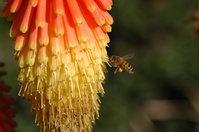 Bee going in for a landing on Kniphofia 'Christmas Cheer. Photo by Mia Ingolia
Bee going in for a landing on Kniphofia 'Christmas Cheer. Photo by Mia Ingolia 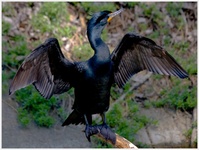 Commorant in the Arboretum. Photo by Allan Jones
Commorant in the Arboretum. Photo by Allan Jones  Pipevine caterpillar on Aristolochia californica in the Arboretum. Photo by Mia Ingolia
Pipevine caterpillar on Aristolochia californica in the Arboretum. Photo by Mia Ingolia
Dragonfly in the Arboretum. Photo by Allan Jones.
 This Peahen (female peafowl) can often be seen in and around the Arboretum.
This Peahen (female peafowl) can often be seen in and around the Arboretum.  Yes, fish can survive in the Arboretum waters...
Yes, fish can survive in the Arboretum waters... 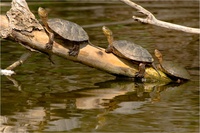 Turtles sunning themselves. Photo by Allan Jones
Turtles sunning themselves. Photo by Allan Jones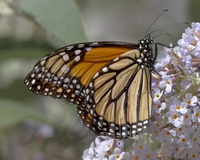 Monarch in the Arboretum. Photo by Allan Jones
Monarch in the Arboretum. Photo by Allan Jones
One omnipresent creature in the arboretum area (and the nearby sections of Davis and the UC Davis campus) is the Mallard duck. The ducks feed on grubs in the grassy areas surrounding the waterways of the arboretum and on the scummy substance that lines the bottom of the waterways. If grubs and scum were all the ducks had to feed upon, there would be quite a few less of them (see the page on Ducks for info on overfeeding).
 An adult male mallard duck in the UC Davis Arboretum
An adult male mallard duck in the UC Davis Arboretum Female merganser in the Arboretum
Female merganser in the Arboretum  Male wood duck in the Arboretum
Male wood duck in the Arboretum  Female and baby wood duck in Arboretum
Female and baby wood duck in Arboretum
 An adult mallard duck feeding in the UC Davis Arboretum.
An adult mallard duck feeding in the UC Davis Arboretum. This is sometimes amusing to watch. Not to be outdone, the geese do it too.
This is sometimes amusing to watch. Not to be outdone, the geese do it too. 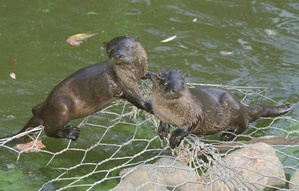 River Otters in the Arboretum Waterway. Photo by Allan Jones.
River Otters in the Arboretum Waterway. Photo by Allan Jones.
<div>
In the spring of 2010 some North American river otters (Lontra canadensis) took up residence in the Arboretum waterway, to the surprise and delight of visitors. Their presence in the waterway is a bit of a mystery, since it is a closed body of water. Look for them near the Native American Contemplative Garden and the Eric E. Conn Acacia Collection where they have been seen playing and swimming.
They schlep across a fence and at least 40 feet to go from North Davis drainage pond to North Davis pond, so anything is possible Daubert
What to do there
Arboretum paths are popular with walkers, joggers, and bicyclists. The main path is a 3.5 mile loop. The lawns at the west end near the Peter J. Shields Oak Grove are perfect for informal games and picnics. Picnic tables are located behind Putah Creek Lodge and in the T. Elliot Weier Redwood Grove. The Storer Garden and White Flower Garden at the west end of the Arboretum and the Arboretum Terrace Garden at the east end are level and most easily accessible to wheelchairs and people with limited mobility.
Most of the arboretum is not lit by streetlights at night, but crime in the Davis area is rare and the arboretum is, generally speaking,a safe place to spend time, even after dark. The arboretum's recent connection to the South Davis Bike Path through a tunnel under I-80 was proposed by Arboretum Director and campus Professor Kerry J Dawson as part of the Davis Greenway Plan (Bicycle Loop). It makes a useful bike-friendly route to the core of the UC Davis campus from South Davis.
The Arboretum's public education programs include guided tours, family nature programs, talks by artists, scholars, and scientists, music and theater performances, classes and workshops. Check the calendar on the Arboretum website for details.
UC Davis's annual Picnic Day holds one major event in the arboretum: the Picnic Day Battle Of The Bands. Not to be missed!
Additional Arboretum Locations
- Arboretum Terrace Garden
- Arboretum Nursery at Orchard Park
- Arboretum Gazebo
- Arboretum Bridges
- Arboretum Dock
- The Foundation
- Donald G. & Mildred S. Roberts Tree
Photo Gallery
 28-Apr-2006
28-Apr-2006 
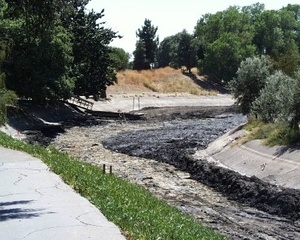 The Arboretum when Putah Creek was drained for improvements.
The Arboretum when Putah Creek was drained for improvements.
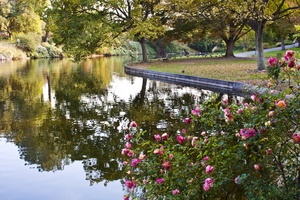 25-Oct-2007
25-Oct-2007 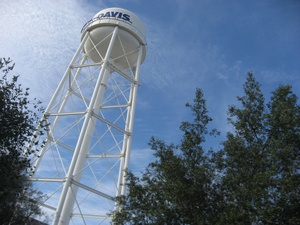 A UC Davis water tower overlooks the Arboretum
A UC Davis water tower overlooks the Arboretum  Arboretum Terrace
Arboretum Terrace
 Romneya coulteri (Coulter's Matilija poppy) in Mary Wattis Brown Garden
Romneya coulteri (Coulter's Matilija poppy) in Mary Wattis Brown Garden
For More Information
2008-12-22 14:47:30 The arboretum is very pretty but they have a sign for every single redbud tree, while many other species go unnamed. Why is this? —tierramor
- The redbud collection (one of the largest in the country) was named in honor of Arboretum superintendent Warren Roberts just a couple of years ago, I think. The signs were likely placed in conjunction with that event. I remember a lot of public interest in the redbuds around that time, too. —DukeMcAdow
2010-02-02 22:43:51 The Redwood Grove is a must visit - like you're in the costal redwood forest even though you're essentially still in Central Valley. —LeeY
2010-02-23 01:25:12 Aside from Carp, has anyone confirmed the presence of any other fish species in the waterway? —CarlosOverstreet
2010-02-23 10:14:17 Today I saw a small otter in the creek by the bridge between the Mondavi Center and the water tower. I tried to get a picture but she made for a drainage pipe pretty quickly. —ritzhall
2010-02-25 00:36:35 Should this page be cleaned up? There are an awful lot of photos that seems haphazardly placed. —CarlosOverstreet
2011-03-29 20:28:18 CAN YOU BOAT THE ARBORETUM WITH A CANOE? OR IS THIS ILLEGAL? —HughJass
2011-05-13 02:47:57 Just try it bro. If someone stops you. Well you didn't know...right? = D —CarlosOverstreet
2011-09-19 15:36:10 Even in September there are lots of flowers to photograph at the Arboretum. —BruceThomas
2012-03-06 11:51:27 The Arboretum is still my favorite place/thing about Davis. Nice to get away from time to time and relax by within it's tranquil borders. —Wes-P
2013-03-13 13:42:09 The arboretum is a great place to take out of town visitors and provides a really pretty backdrop for photography. I took my engagement pictures here and they turned out very well. —LoriOrf


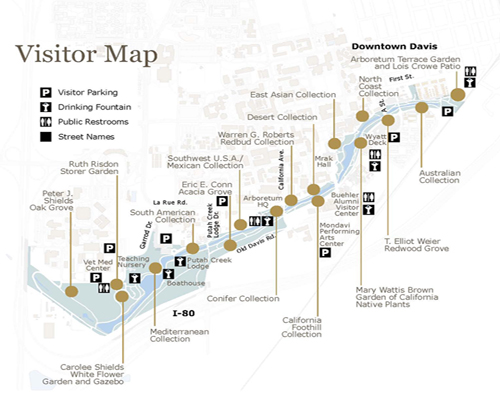
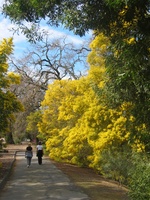


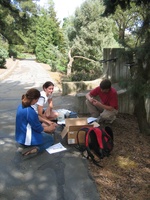



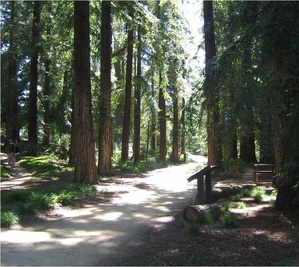



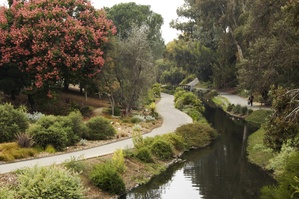
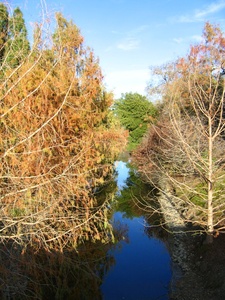


Comments:
You must be logged in to comment on this page. Please log in.